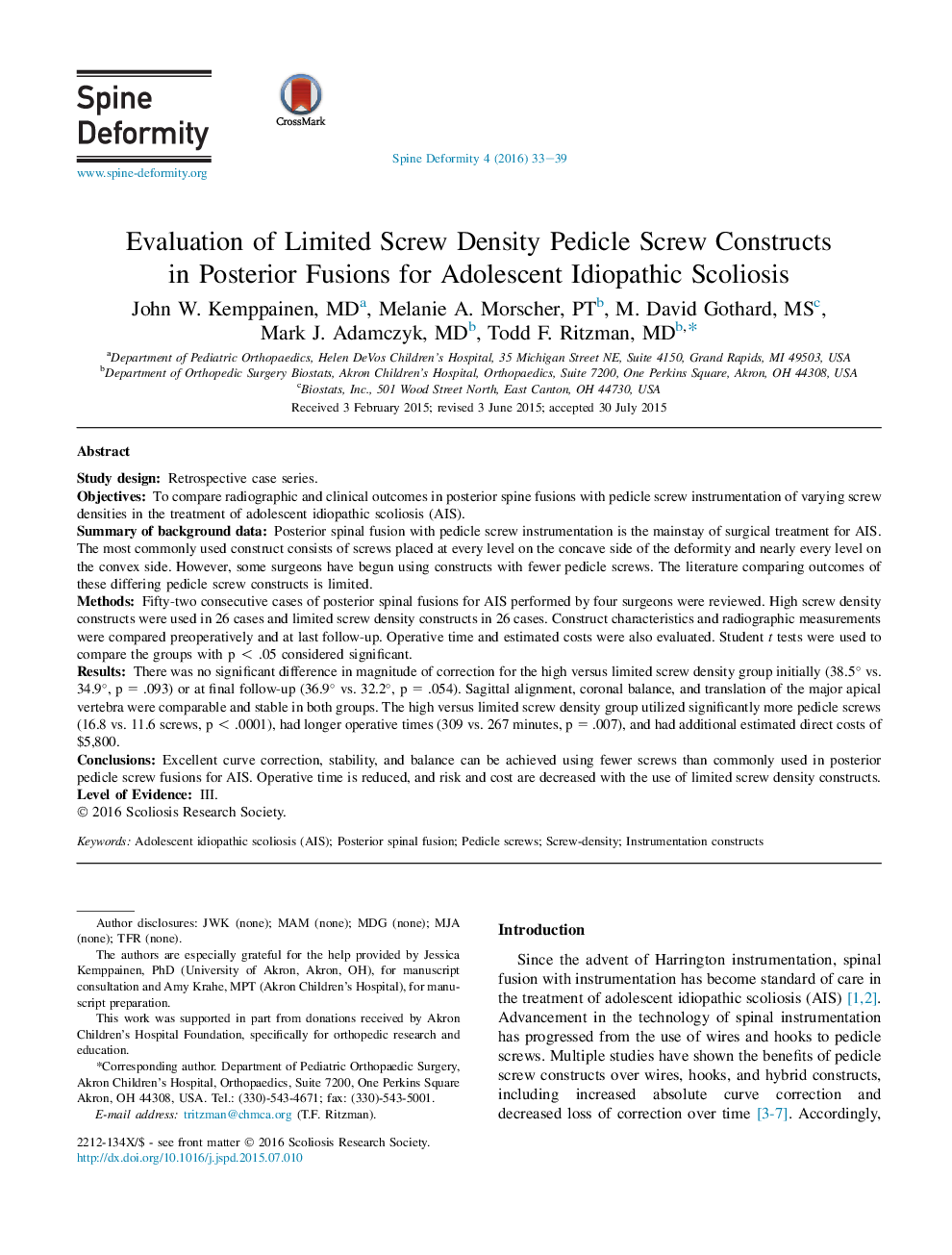| کد مقاله | کد نشریه | سال انتشار | مقاله انگلیسی | نسخه تمام متن |
|---|---|---|---|---|
| 4095482 | 1268536 | 2016 | 7 صفحه PDF | دانلود رایگان |
Study designRetrospective case series.ObjectivesTo compare radiographic and clinical outcomes in posterior spine fusions with pedicle screw instrumentation of varying screw densities in the treatment of adolescent idiopathic scoliosis (AIS).Summary of background dataPosterior spinal fusion with pedicle screw instrumentation is the mainstay of surgical treatment for AIS. The most commonly used construct consists of screws placed at every level on the concave side of the deformity and nearly every level on the convex side. However, some surgeons have begun using constructs with fewer pedicle screws. The literature comparing outcomes of these differing pedicle screw constructs is limited.MethodsFifty-two consecutive cases of posterior spinal fusions for AIS performed by four surgeons were reviewed. High screw density constructs were used in 26 cases and limited screw density constructs in 26 cases. Construct characteristics and radiographic measurements were compared preoperatively and at last follow-up. Operative time and estimated costs were also evaluated. Student t tests were used to compare the groups with p < .05 considered significant.ResultsThere was no significant difference in magnitude of correction for the high versus limited screw density group initially (38.5° vs. 34.9°, p = .093) or at final follow-up (36.9° vs. 32.2°, p = .054). Sagittal alignment, coronal balance, and translation of the major apical vertebra were comparable and stable in both groups. The high versus limited screw density group utilized significantly more pedicle screws (16.8 vs. 11.6 screws, p < .0001), had longer operative times (309 vs. 267 minutes, p = .007), and had additional estimated direct costs of $5,800.ConclusionsExcellent curve correction, stability, and balance can be achieved using fewer screws than commonly used in posterior pedicle screw fusions for AIS. Operative time is reduced, and risk and cost are decreased with the use of limited screw density constructs.Level of EvidenceIII.
Journal: Spine Deformity - Volume 4, Issue 1, January 2016, Pages 33–39
